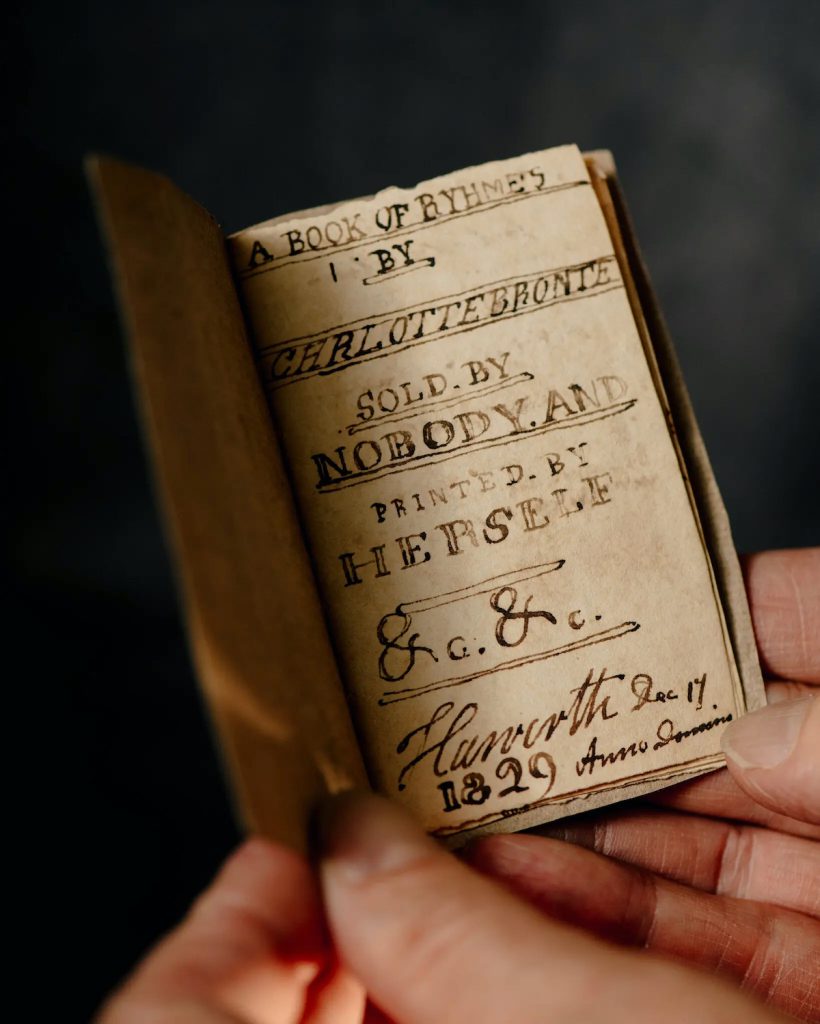Category: news & notes
A Book of Ryhmes by Charlotte Brontë
Forthcoming 21 April 2025 from Tartarus Press in association with the Brontë Society :
The first publication of A BOOK OF RYHMES by Charlotte Brontë reproduces her handwritten pages in facsimile at original size, as well as enlarged, alongside a transcription of the poems. The book includes an Introduction by Patti Smith, and essays by Barbara Heritage and Henry Wessells. The book will be available in hardcover and paperback.
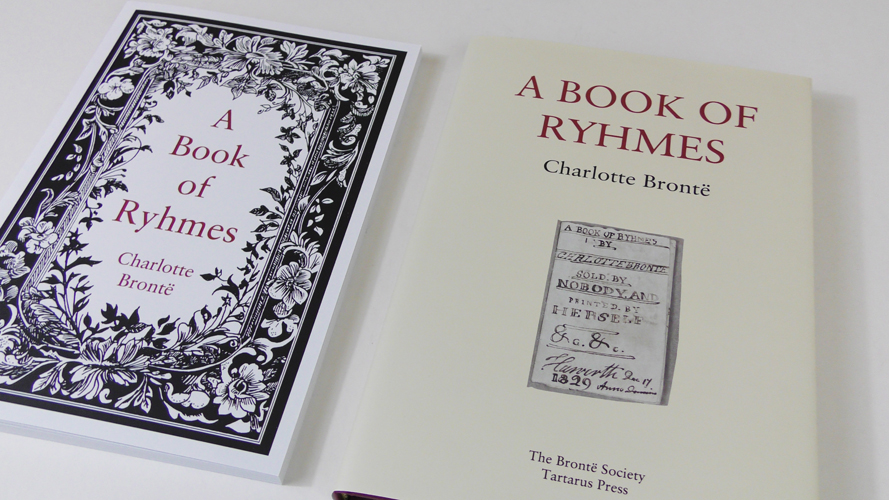
Details and advance order information here :
http://tartaruspress.com/bronte-a-book-of-ryhmes.html
The manuscript book of verse was composed by Charlotte Brontë in the autumn of 1829. It was known to her biographer, Mrs. Gaskell, and had last been sighted in 1916. Readers of the Endless Bookshelf will recall the reappearance of the manuscript at the New York Book Fair on 21 April 2022, and its sale to the UK charity, Friends of National Libraries for donation to the Brontë Parsonage Museum in Haworth. And now everyone can read Charlotte’s Ryhmes.
Note added 5 April : your correspondent is a bit giddy with happiness, pictured here holding the first copy of A BOOK OF RYHMES in New York City.
The Tom La Farge Award, Friday 11 October
Readers of the ’shelf and friends in the New York area are invited to an event and presentation, this year honoring PEDRO PONCE, the winner of the Second Tom La Farge Award for Innovative Writing, Teaching and Publishing
It will be held on Friday 11 October 2024, from 6:30 p.m. to 8:30 p.m., at the Ground Floor Gallery of the Grolier Club, 47 East 60th St..(between Madison and Park aves.), NYC, NY 10022.
Pedro will be interviewed, discuss the writing of Tom La Farge, and read from his own work.
This annual award in the amount of $10,000 is designed to encourage and foster literary activity that combines serious play, imagination, erudition and innovative practice. To learn more about the Tom La Farge Award :
https://www.thetomlafargeaward.com/
Refreshments will be served and the doors open at 6:30 pm.
The event is free and open to the public but seating is limited so please RSVP to : Wendy Walker, wwalker377@gmail.com
We look forward to sharing an evening of wonderful writing with you!
Wendy Walker
& the Tom La Farge Committee :
Corina Bardoff
Daniel Levin Becker
Sam Goodman
Michael Kowalski
Eliza Martin
Philip Ording
posted on behalf of the Committee by
Henry Wessells
‘The Black Lands’
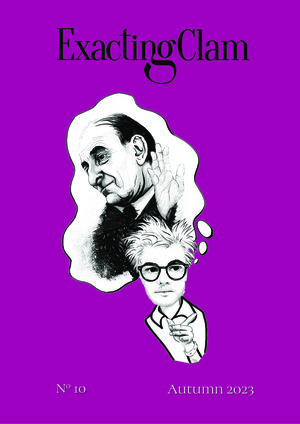
“The Black Lands” (an illustrated critical fiction) appears in the current issue of Exacting Clam, no. 10, Autumn 2023, just published
along with “Isle of Cloves” by Gregory Feeley, “Chamomile” by Corina Bardoff, and many others
https://www.exactingclam.com/issues/no-10-autumn-2023/
A Book of Ryhmes by Charlotte Bronte
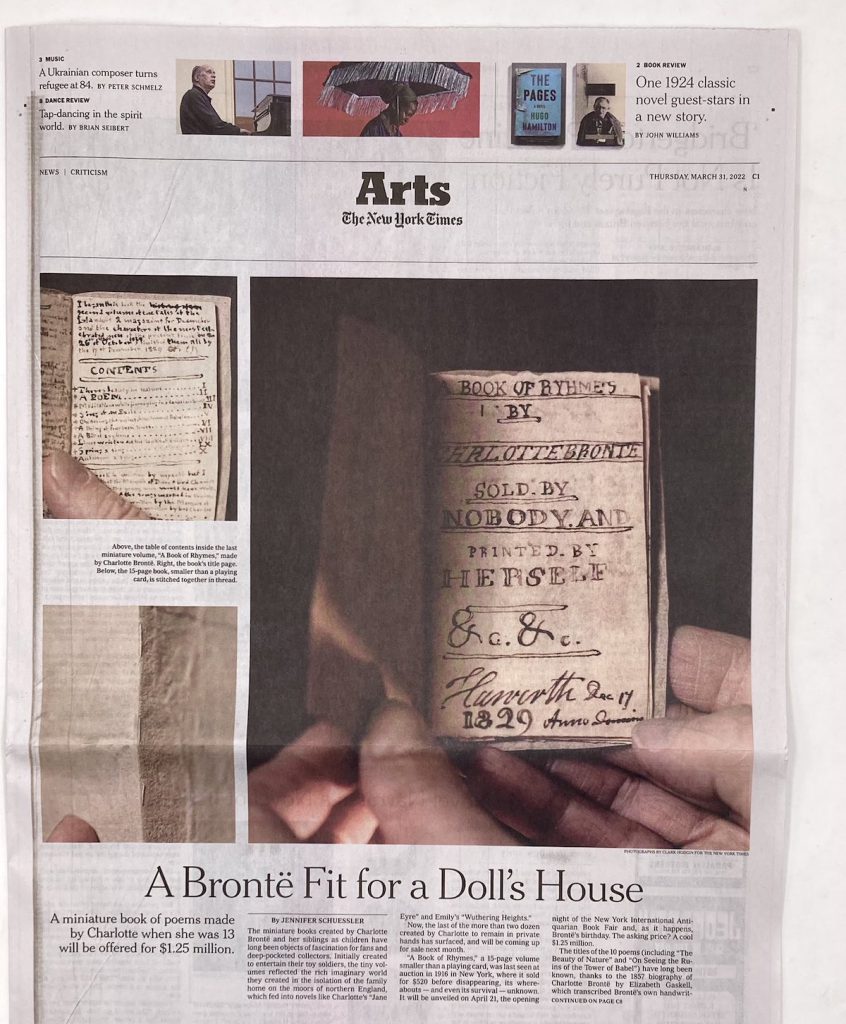
It’s a nice to have a brief role in the long history of this manuscript, and to be part of this joyous chapter in the history of the book trade. See you at the book fair.

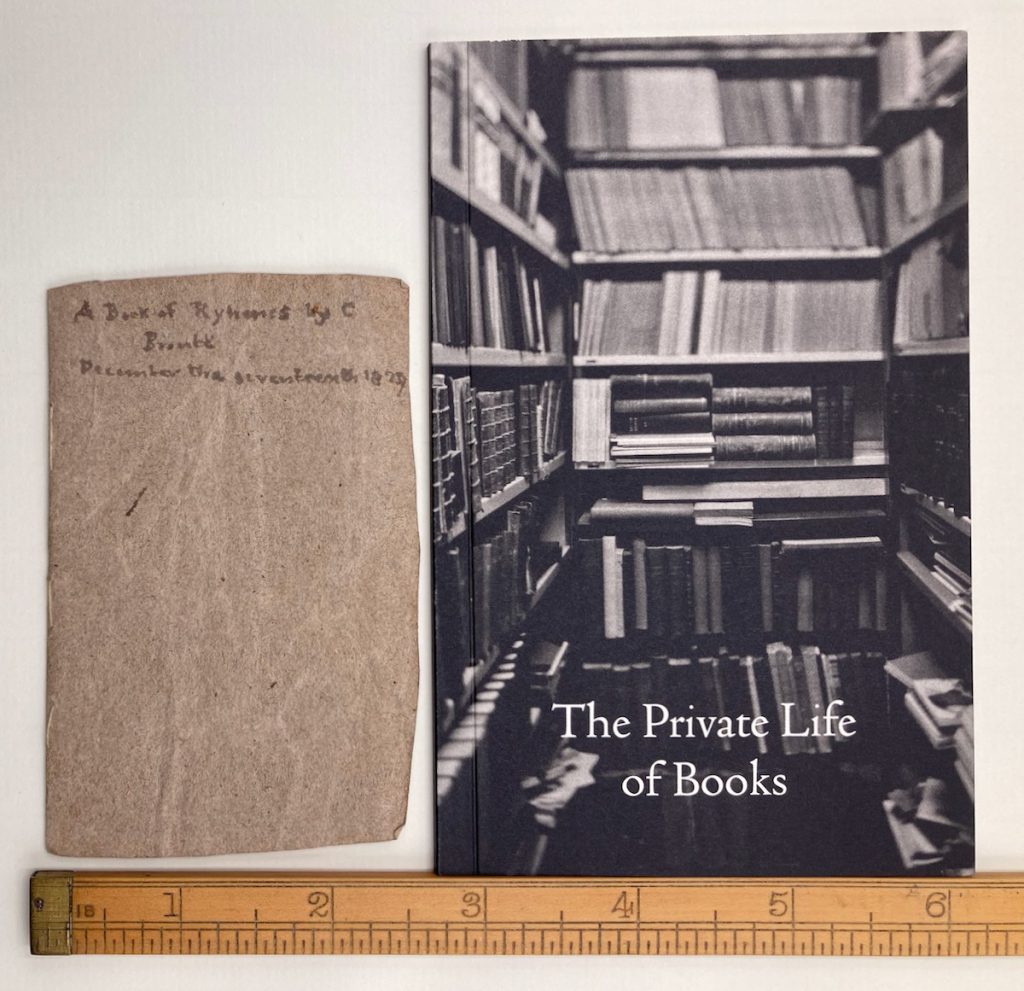
fifteen years of the Endless Bookshelf
24 January 2022
Your correspondent celebrates fifteen years of simply messing about in books on this website (it started here, but of course the mischief and fun and seriousness go back much further). There are a few regular readers of the ’shelf, and perhaps once in a while a new reader will come across something in the archives which cannot be found elsewhere. I continue to read Proust in the Pléiades edition, with great interest and pleasure; I am now at the stage of Le Côté de Guermantes, and there is no stopping. There are also other books which come to hand, as I usually have a second or a third book which I am reading, or at least reading at. Some of them are noted below. I omit the names of several bibliographies I have been consulting as these fall under work in progress.
I have written a few essays recently where the lead time for publication is rather longer than for the Endless Bookshelf: I received Paul Witcover’s new book late last week, read it, and finished the review a couple of days later; and even had time to look at it in the cold light of day before posting it. That flexibility is one reasion why I figure I will keep writing these chronicles of small beer for a while longer. Perhaps you will want to read them.
I am very much looking forward to reading Robert Aickman An Attempted Biography by R. B. Russell (Tartarus Press); I have read some of Aickman’s stories but by no means all of them.
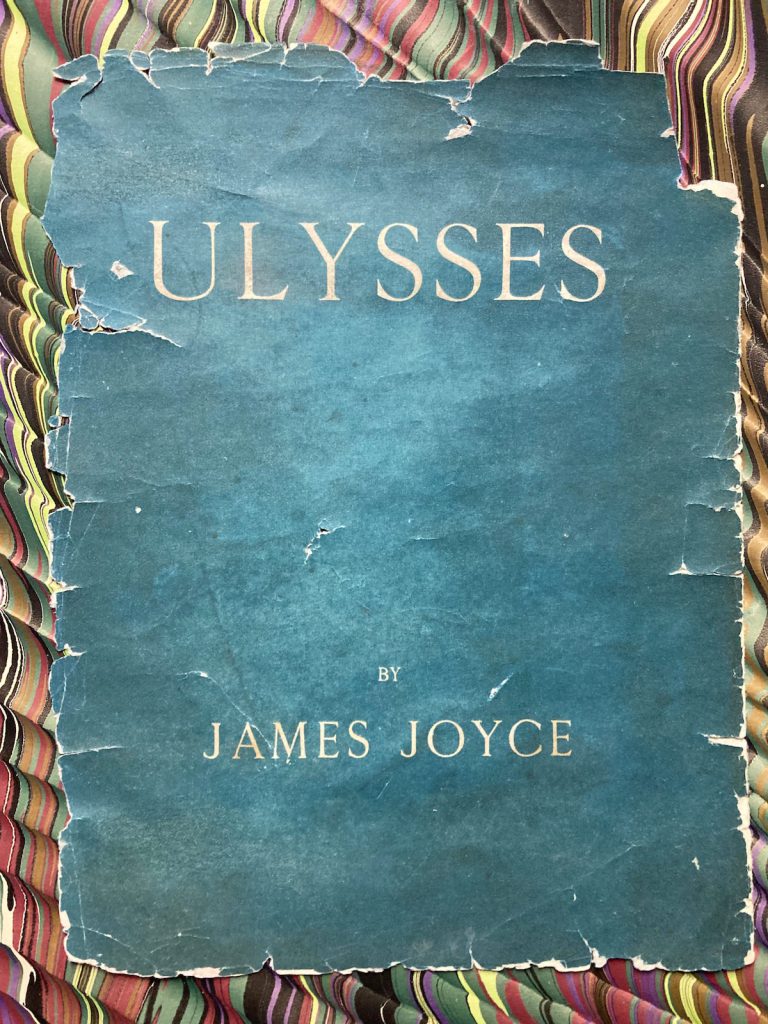
Wednesday 2 February marks the centenary of James Joyce’s Ulysses, published as a book in Paris on the author’s fortieth birthday in 1922. This is the darkened and tattered remains of the front wrapper of one of the 750 ordinary copies of the first edition, one of those scraps of paper which demand to be saved.
— — —
In February, I expect to be at the California International Antiquarian Book Fair in Oakland, booth 504 (James Cummins Bookseller) at the Oakland Marriott City Center, Friday 11 February through Sunday 13 February. If you are in the Bay Area, come by and say hello (and please let me know in advance if you would like a pass).
— — —
recent reading
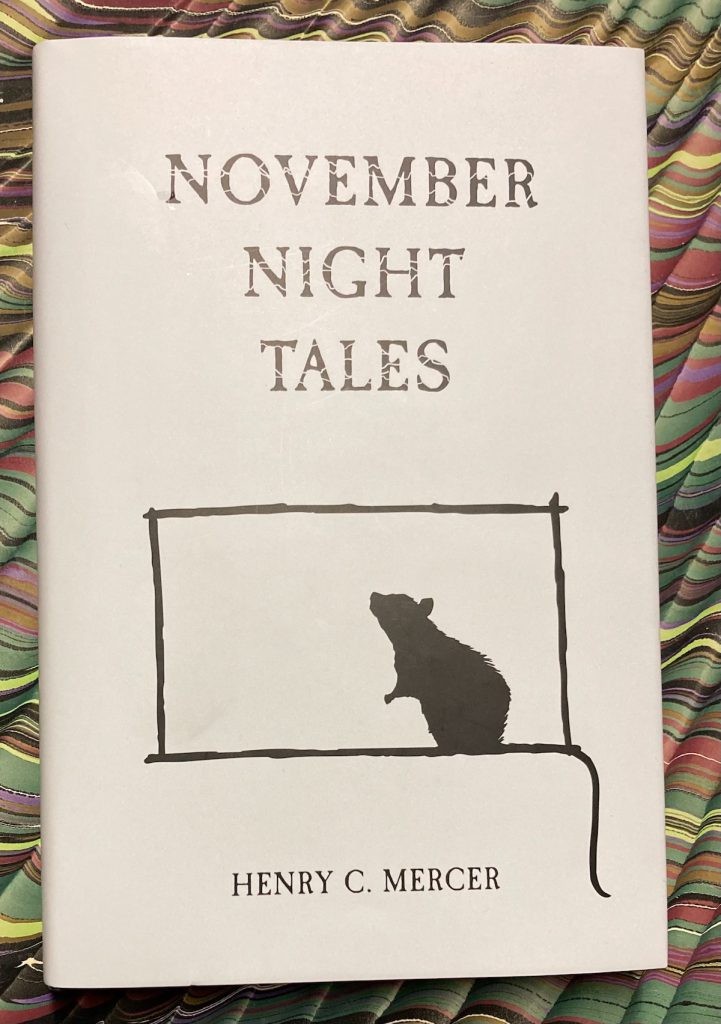
— Henry C. Mercer. November Night Tales [1928]. [Introduction by Peter Bell]. Swan River Press, 2015.
Supernatural tales by the Pennsylvania polymath archaeologist, ceramicist, and polymath Henry C. Mercer (1856-1930), who was educated at Harvard (Class of 1879) and as a ceramicist played a key part in the American Arts and Crafts movement. His poured concrete mansion, Fonthill — named for William Beckford’s Gothic folly — is a turn of the century wonder; and his collections of American tools and vernacular objects pioneered the preservation of what is now called material culture. These stories range from rural Pennsylvania folklore to a forgotten treasure in the Italian Alps. The best of them is “The Wolf Book”, a tale of werewolves in the Balkans and an ill-starred book.
— Richard Thompson, with Scott Timberg. Beeswing. Losing My Way and Finding My Voice 1967-1975. Algonquin Books of Chapel Hill, 2021.
Memoir by one of the founders of Fairport Convention; his fabulous 1968 dream of Keith Richards and south London is worth the price of admission. Thompson played a solo acoustic show at a local Montclair venue not too long before the pandemic, and “1952 Vincent Black Lightning” was one of the great moments of that evening. Thompson’s songs express — like the late novels of Russell Hoban — the curious notion that loss is the great creative well for literature and song. Sad and beautiful can be triumphant at the same time, because the song outlasts the sorrow.
— T. Frank Muir. Hand for a Hand. Soho Crime, [2012]. Crime novel set in St. Andrews, Scotland.
— Sara Gran. The Book of the Most Precious Substance. A Novel. Dreamland Books, [2022].
— Michael Shea. Mr. Cannyharme. A Novel of Lovecraftian Terror. Foreword by Linda Shea. Edited by St. Joshi. Hippocampus, [2021].
San Francisco at the beginning of the AIDS crisis, with interdimensional beings, written by Michael Shea circa 1981. I found the first half of the book interesting, with well grounded scenes around the Tenderloin hotel managed by the writer-protagonist, and some choice, weird secondary characters. My interest waned as the supernatural elements unfolded.
Sexual Stealing by Wendy Walker
Sexual Stealing, a beautiful and dangerous book by Wendy Walker, with a preface by Daniel Levin Becker.
Published 1 September 2021 by Temporary Culture.
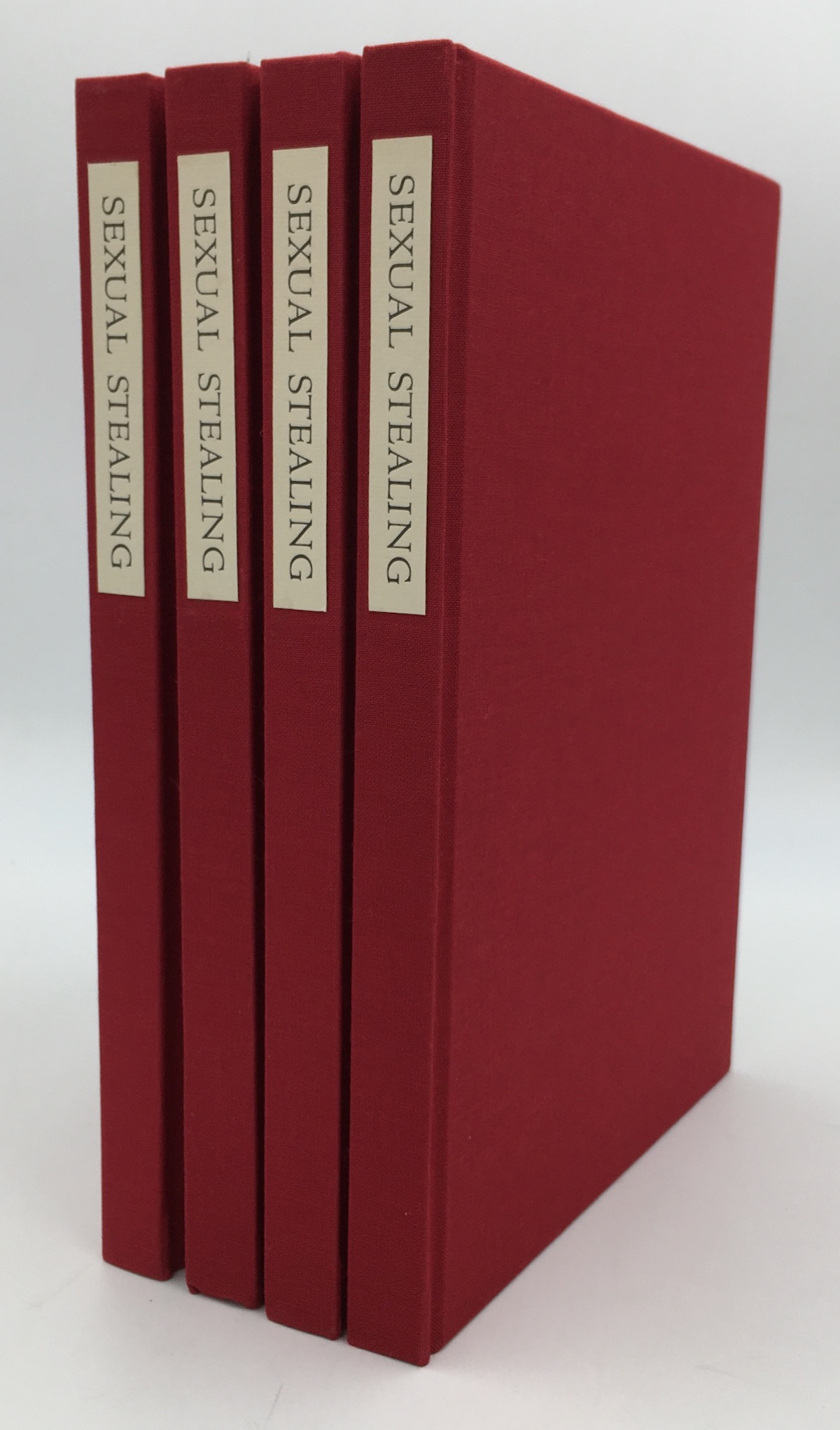
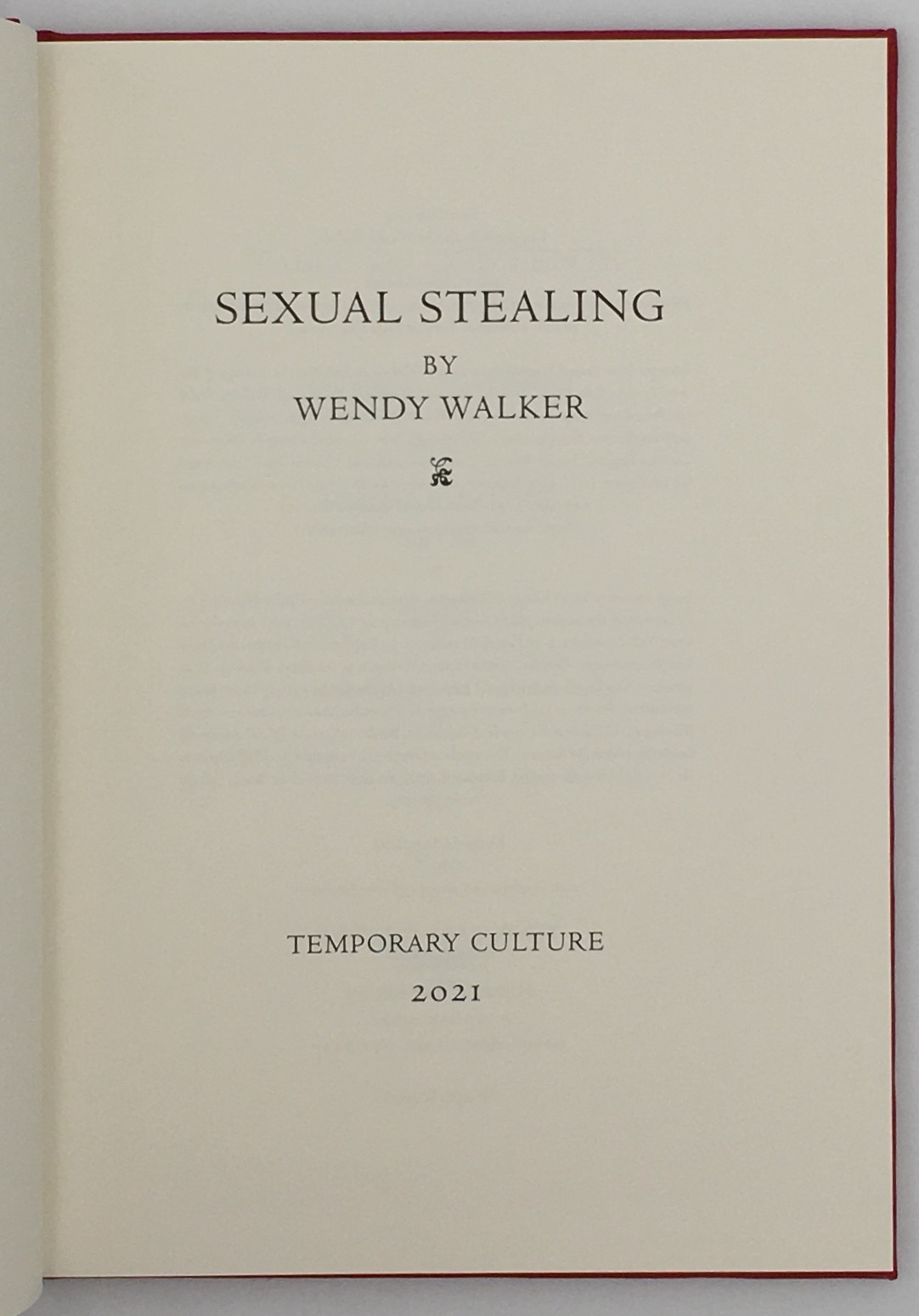
Sexual Stealing is a formally innovative interrogation of the Gothic, slavery, and sexual exploitation, written using a simple constraint to extract a secondary, heretofore hidden text from Anne Radcliffe’s 1794 novel The Mysteries of Udolpho. Walker probes the obsessions and anxieties underlying the early Gothic novels, and dramatizes a tale of forcible taking, the brutal exercise of wealth and power, and the revolution that follows. She notes, “Sexual Stealing is poetic in that its form reflects its subject; it searches for a way to write the voices that are buried in full view, and subverts available genres to talk about something widely felt and intuited but not discussed.”
— — — —
WALKER, Wendy. Sexual Stealing. [With a preface by Daniel Levin Becker]. With color and black and white illustrations throughout, pictorial endsheets. Book design by Jerry Kelly. 192 pages, 7 x 10 inches. [Upper Montclair, New Jersey:] Temporary Culture, 1 September 2021. Edition of 125 copies signed by the author. Red brillianta cloth with letterpress spine label.
ISBN 09961359-5-2 ISBN13 978-0-9961359-5-5.
Price: $200.00
ORDER FROM TEMPORARY CULTURE
Wendy Walker is author of eight books, including The Secret Service (Sun & Moon, 1992) and My Man and Other Critical Fictions (Temporary Culture, 2011).
news & notes
New look, new irregularity
It has been a long time, I know. I have been reading, working, walking in the woods, and even sometimes playing that game of finding a deadline to make things happen. I wrote an essay for The Book Collector, and have a couple other things on slow simmer. One of the procrastination devices was to embark on a relaunch of the Endless Bookshelf website, thanks to the efforts of Michael J. Deluca (publisher of Reckoning, author of Night Roll, etc.), and look! It worked. It is now much easier to produce updates.
Your correspondent pledges to update the ’shelf with greater frequency if still on an irregular basis. The archives (2007-2021) will likely remain in static form, but I will certainly draw from or link to them. The newsletter will appear monthly at its most frequent, more realistically quarterly. Please remember that the mailing list is not automated or shared; if you no longer wish to receive mailings from the Endless Bookshelf or Temporary Culture, simply tell me.
— — — —
a policy statement
Back in the fall of 2016, when I produced the burning marshmallow, Donald Trump The Magazine of Poetry, it became clear to me that I did not want to use any third-party crowd-funding platform. This is contrarian but I still feel the same way.
Similarly, right at the founding of the ’shelf, I made an arbitrary but necessary decision that I will link to author and small press and individual websites, but not to big corporate sales sites. This is the presumption that anyone reading can choose how to obtain current commercially published books. I tend to buy new books through my local.
The micropublishing activities of Temporary Culture — the books published and sold by Temporary Culture — make possible the Endless Bookshelf website (and the Avram Davidson website). The Private Life of Books or A Conversation larger than the Universe are a good place to start.
— — — —
various
As a longtime fan of The Secret Service (1992), I am delighted to report that a new edition of Wendy Walker’s novel will be published by Tough Poets Press. I will report as further information becomes available.
The Best of R. A. Lafferty, edited by Jonathan Strahan, (published by Gollancz in 2019) is now available as a Tor Essentials paperback, and well worth looking for.
The Book Collector 70:1 for Spring 2021 prints The Private Life of Books II, How books are made, and a short notice of the new edition. The other poem in the issue (also by a New Jersey poet) accorded a full page is a reproduction of a manuscript fair copy of “This is Just to Say”, inscribed by William Carlos Williams to a small press publisher.
The Booksellers, the documentary about the New York antiquarian book trade directed by D.W. Young, which had its theatrical release just as the pandemic was beginning, has now been released for viewing in many countries. Your correspondent has a speaking role, and there is a walk in the woods; a reading of the title pome of The Private Life of Books can be heard as the closing voiceover. Information at: https://booksellersdocumentary.com.
I had been thinking about Charles F. Heartman many times during the past several weeks when I was using some of his books on my reference shelves: his books on The New England Primer and on Non-New England Primers are still essential works. He was one of the first to attempt a systematic bibliography of Phillis Wheatley (1915); it has been superseded but the facsimile plates are of great interest (for more on Wheatley: Why one looks at every book in the box, 2011). I wrote briefly of Heartman in the first weeks of the Endless Bookshelf, and the Buchnarr device in the title banner above, a woodcut from the German edition of The Ship of Fools (1494), was reproduced in The Book-fool. Bibliophily in caricature (1934), a supplement to The American Book Collector magazine edited by Heartman.
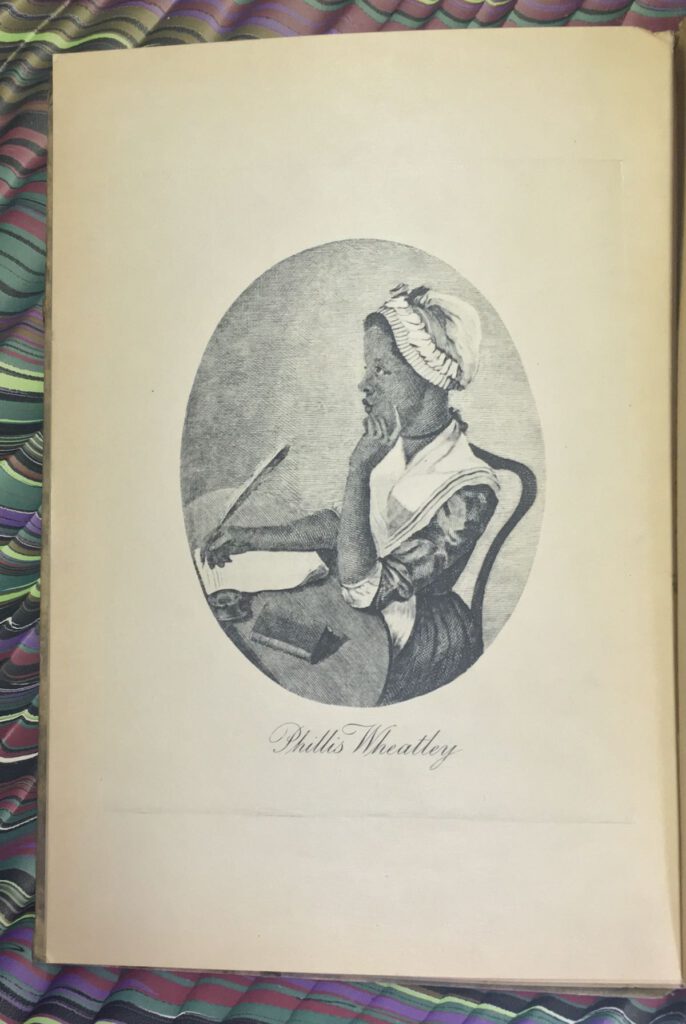
— — — —
a walk in the woods
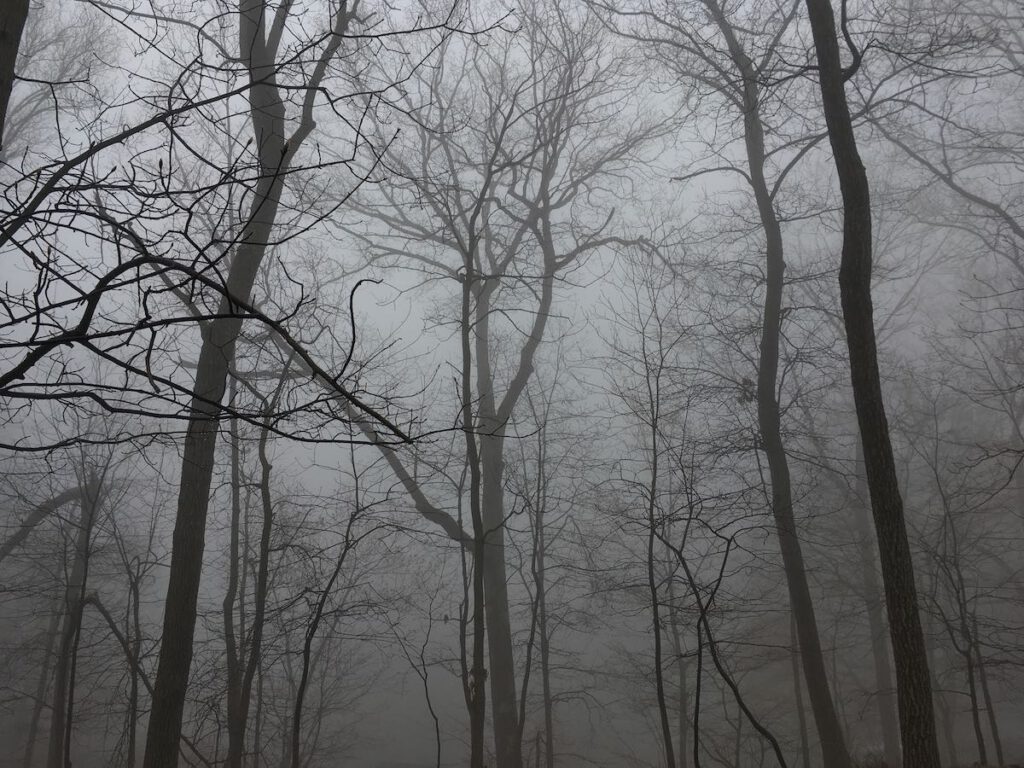
— — — —
in the FT for 8 April, an article by Tom Robbins about the Chatley Heath octagonal semaphore tower, the only surviving example (before the Landmark Trust renovation, it might have provoked a Mark Valentine story):
Wandering among the chestnuts, oaks and Scots pines on Chatley Heath in Surrey, you arrive without warning at a place where the branches part and you find yourself looking up at a slender octagonal tower.The Chatley Heath tower was completed in 1822 and by 1824, the entire line was up and running. Each station had a roof-mounted mast with two moving arms, the positions of which indicated letters, numbers and a few frequently used words. In clear weather, a message could be transmitted from London to Portsmouth in as little as 15 minutes, rather than the eight hours it might take on horseback.Many of the stations were simply one- or two-storey houses with a mast on the flat roof, but at Chatley Heath the surrounding topography required a five-storey tower with a 40ft-mast on top. The system worked so effectively that the Admiralty commissioned a second line, branching off at Chatley Heath and continuing west to the naval base at Plymouth.
https://on.ft.com/3s8RXC6
— — — —

